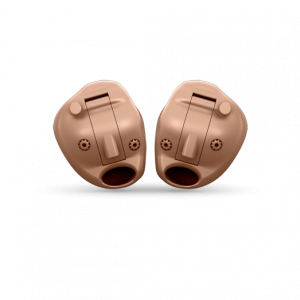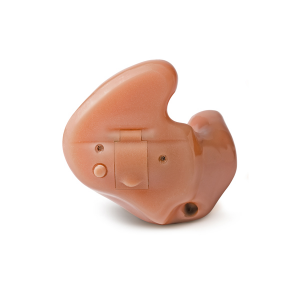Hearing aids come in a variety of prices, styles and sizes. So it is important that we help select the hearing aid that is most comfortable for you.
Depending on the hearing test AND the individuals reported hearing difficulties a hearing aid maybe necessary. There are different styles of hearing aids (shown below). A hearing aid helps boost sound to a comfortable level that allows you to hear conversation more easily.
Completely in the canal (CIC) or mini CIC

A completely-in-the-canal hearing aid:
- Is the smallest and least visible type
- Is less likely to pick up wind noise
- Uses very small batteries and can be difficult to handle
- Doesn’t contain extra features, such as volume control or a directional microphone
- Is susceptible to earwax clogging the speake
An in-the-canal hearing aid:
- Is less visible in the ear than larger styles
- Includes features that won’t fit on completely-in-the-canal aids, but may be difficult to adjust due to its small size
- Is susceptible to earwax clogging the speaker

An in-the-ear hearing aid:
- Includes features that don’t fit on smaller style hearing aids, such as a volume control
- May be easier to handle
- Uses a larger battery for longer battery life
- Is susceptible to earwax clogging the speaker
- May pick up more wind noise than smaller devices
- Is more visible in the ear than smaller devices
Behind the ear (BTE)
![]()
A behind-the-ear (BTE) hearing aid hooks over the top of your ear and rests behind the ear. A tube connects the hearing aid to a custom earpiece called an earmold that fits in your ear canal. This type is appropriate for people of all ages and those with almost any type of hearing loss.

A receiver-in-canal hearing aid:
- Has a less visible behind-the-ear portion
- Is susceptible to earwax clogging the speaker
An open-fit hearing aid:
- Doesn’t plug the ear like the small in-the-canal hearing aids do, making your own voice sound better to you
- May be more difficult to handle and adjust due to small parts

